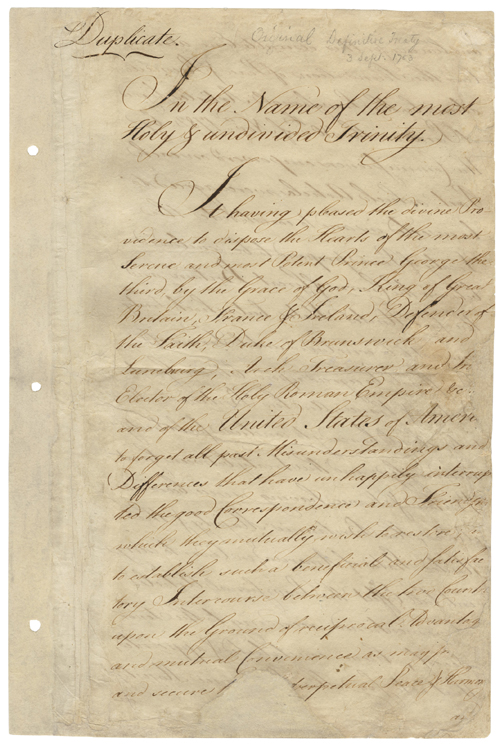
Treaty of Paris (1783)
The American War for Independence (1775-83) was actually a world conflict, involving not only the United States and Great Britain but also France, Spain, and the Netherlands. The peace process brought a vaguely formed, newly born United States into the arena of international diplomacy, playing against the largest, most sophisticated, and most established powers on earth.
The three American negotiators, John Adams, Benjamin Franklin, and John Jay, proved themselves to be masters of the game, outmaneuvering their counterparts and clinging fiercely to the points of national interest that guaranteed a future for the United States. Two crucial provisions of the treaty were British recognition of U.S. independence and the delineation of boundaries that would allow for American western expansion.
The treaty is named for the city in which it was negotiated and signed. The last page bears the signatures of David Hartley, who represented Great Britain, and the three American negotiators, who signed their names in alphabetical order.
Many treaty documents, however, can be considered as originals. In this case, for example, the United States and British representatives signed at least three originals, two of which are in the holdings of the National Archives. On one of the signed originals the signatures and wax seals are arranged horizontally; on the other they are arranged vertically. In addition, handwritten certified copies were made for the use of Congress. Some online transcriptions of the treaty omit Delaware from the list of former colonies, but the original text does list Delaware.

